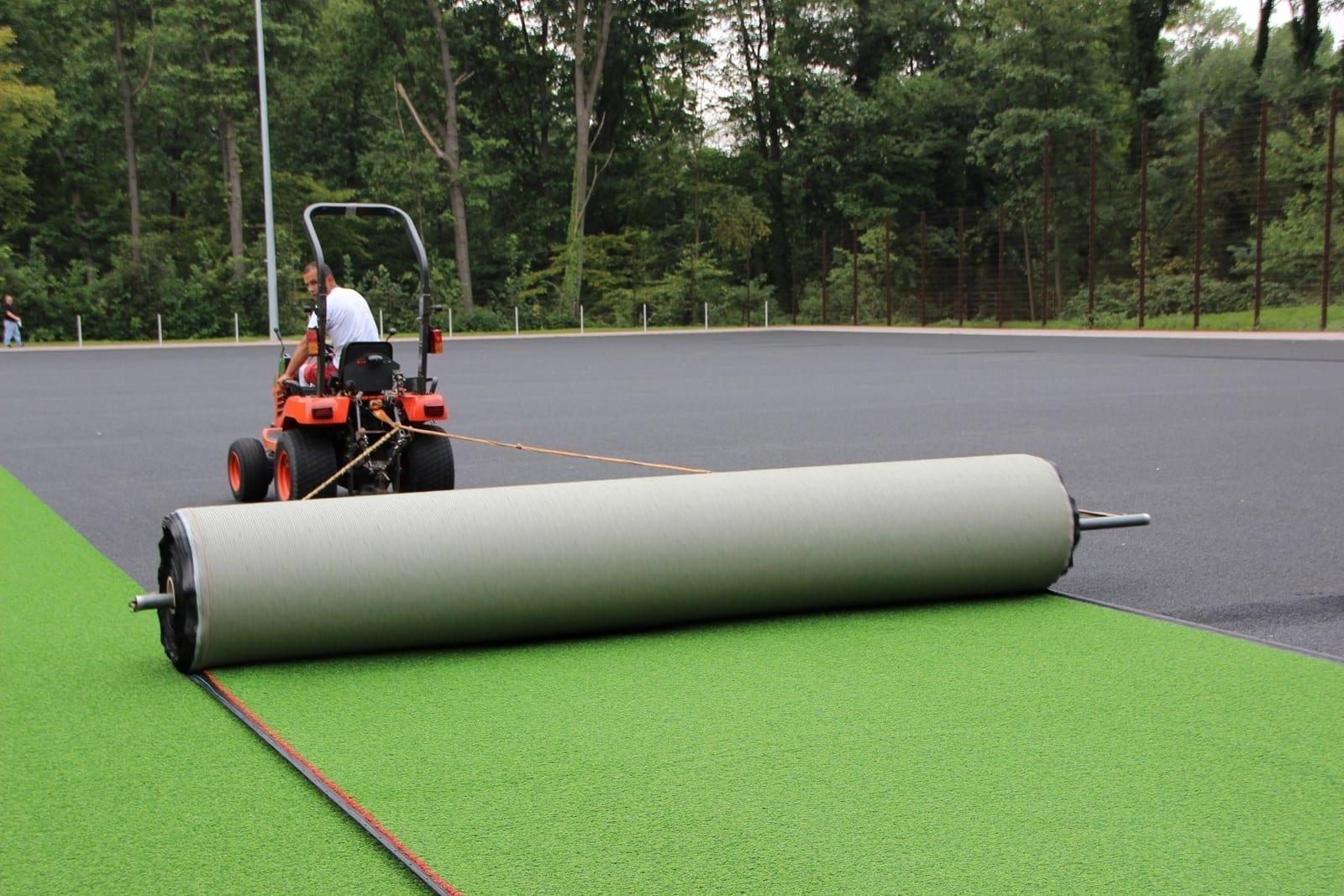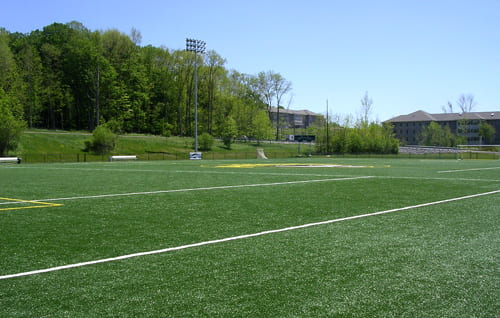Sustainable Arizona Artificial Turf for a Always-Green Lush Green Lawn
Sustainable Arizona Artificial Turf for a Always-Green Lush Green Lawn
Blog Article
Explore the Environmental Conveniences of Opting for Synthetic Grass Solutions
The adoption of synthetic grass services provides a compelling opportunity to deal with pressing environmental obstacles. By substantially lowering water use and lessening the application of hazardous chemicals, these alternatives not only advertise lasting landscape design yet additionally shield neighborhood communities. The reduced carbon impact linked with decreased upkeep tasks contributes to a much more sustainable strategy to land monitoring. Nonetheless, the ramifications of these advantages extend past mere conservation initiatives, questioning regarding their long-term influence on habitat preservation and total environmental equilibrium. Checking out these measurements reveals a complex interaction worth considering.
Water Preservation Conveniences
One of one of the most considerable benefits of synthetic grass is its capacity to preserve water. Standard grass yards require substantial irrigation, specifically in locations vulnerable to dry spell or water restrictions. In contrast, synthetic grass does not require watering, substantially reducing the overall demand for water sources. This feature is specifically valuable in deserts where water deficiency is a pressing issue.
By eliminating the requirement for routine watering, artificial lawn adds to sustainable landscape methods and assists minimize the ecological impact of too much water intake. The conservation of water expands to the reduction of runoff, which can lead to dirt erosion and river pollution.
Furthermore, the setup of synthetic lawn enables towns and home owners to allocate water resources more effectively, concentrating on necessary usages such as alcohol consumption water and agriculture. The change towards synthetic grass not only promotes liable water use but likewise lines up with wider environmental objectives targeted at protecting natural resources.
As communities significantly focus on sustainability, the water conservation advantages of synthetic grass present a compelling instance for its fostering in industrial and residential landscape design jobs.
Lowered Chemical Use
The change to fabricated grass significantly decreases the dependence on chemical treatments typically used in all-natural yard maintenance. Traditional turf management normally entails the application of herbicides, fertilizers, and chemicals to advertise growth and control parasites. These chemicals can present threats to human wellness, regional wild animals, and the environment, adding to soil and water contamination.
In comparison, fabricated grass removes the demand for these unsafe substances. When set up, it needs very little upkeep, largely being composed of routine cleaning and seldom infill replenishment. This decrease in chemical use not only profits the immediate environment however additionally adds to wider eco-friendly security. By reducing the launch of synthetic compounds into the environment, synthetic grass promotes much healthier soil and water systems.
Additionally, the lack of chemical drainage connected with synthetic grass installments assists shield neighborhood rivers from pollution, sustaining water life and maintaining biodiversity. Phoenix turf companies. As neighborhoods increasingly prioritize lasting methods, going with man-made lawn provides a viable solution that straightens with environmental preservation goals. Through this change, home owners can enjoy lavish eco-friendly spaces without jeopardizing eco-friendly wellness, leading the method for a much more lasting future
Lower Carbon Footprint

Moreover, the installation of man-made turf can cause substantial water preservation. Natural lawns need substantial amounts of water for watering, which not just contributes to the carbon impact connected with water removal and therapy yet additionally strains neighborhood water sources. On the other hand, synthetic grass requires minimal upkeep, needing no watering, thereby significantly minimizing water use and its connected energy costs.
Additionally, the durability of synthetic grass adds to its decreased carbon effect. With a lifespan of up to 15 years or even more, the requirement for constant replacements is decreased, causing less waste and reduced power intake in production and disposing of standard grass options. On the whole, synthetic grass offers a sustainable alternative Arizona artificial turf for ecologically conscious landscaping.
Environment Conservation
Environment preservation is an essential factor to consider in the dispute over landscape design choices, especially when contrasting fabricated lawn to all-natural lawn. Natural lawn yards usually call for substantial maintenance, including the usage of fertilizers, chemicals, and herbicides, which can adversely influence neighborhood ecological communities. These chemicals can seep into the soil and waterways, harming indigenous vegetation and animals and interfering with neighborhood habitats.
On the other hand, artificial grass offers a chance to minimize the environmental impact of landscape design. By selecting artificial turf, homeowners can lessen the interruption of all-natural environments connected with conventional yard care techniques. Fabricated grass eliminates the requirement for dangerous chemicals, thus shielding neighboring wild animals and maintaining the integrity of bordering ecological communities. The installation of man-made lawn can lead to the conversion of previous lawn areas right into more biodiverse landscapes, such as pollinator yards or indigenous plant areas, which can support regional wildlife.
Eventually, the change to artificial lawn not just preserves water and minimizes maintenance efforts but also fosters a more unified relationship between human tasks and the all-natural setting, advertising environment conservation while doing so.
Long-Term Sustainability
Lasting sustainability is an essential consider assessing the benefits of fabricated lawn over typical yard lawns. One of one of the most substantial advantages of man-made lawn is its resilience; it can last as much as 15-20 years with marginal upkeep, whereas all-natural yard requires regular reseeding and substitute. This longevity lowers the need for continuous sources, such as water, plant foods, and pesticides, which are vital for maintaining a healthy and balanced grass yard.
Furthermore, synthetic grass adds to have a peek at these guys a reduction in carbon discharges connected with yard care tools. Traditional lawns commonly need gas-powered lawn mowers, leaners, and blowers, all of which add to air contamination. Arizona artificial turf. On the other hand, synthetic grass removes the need for such equipment, promoting a cleaner setting
Furthermore, the production of synthetic grass significantly uses recycled products, enhancing its sustainability account. As makers take on environmentally friendly techniques, the ecological impact of synthetic grass remains to lessen.
Conclusion
The adoption of artificial turf services presents substantial environmental advantages, including significant water preservation, minimized dependence on harmful chemicals, and a lower carbon footprint. Additionally, synthetic grass help in maintaining natural environments by lessening land disruption and advertising lasting sustainability through making use of resilient products. Collectively, these factors emphasize the capacity of synthetic grass to contribute positively to environmental wellness and use a practical option to conventional landscaping methods in an increasingly resource-conscious globe.
In contrast, synthetic turf does not need watering, considerably decreasing the general need for water resources. By reducing the launch of top article synthetic compounds into the community, synthetic grass advertises much healthier soil and water systems.
Additionally, the installation of fabricated lawn can result in considerable water conservation. In comparison, artificial lawn needs very little maintenance, calling for no watering, consequently substantially minimizing water use and its connected power prices.

Report this page